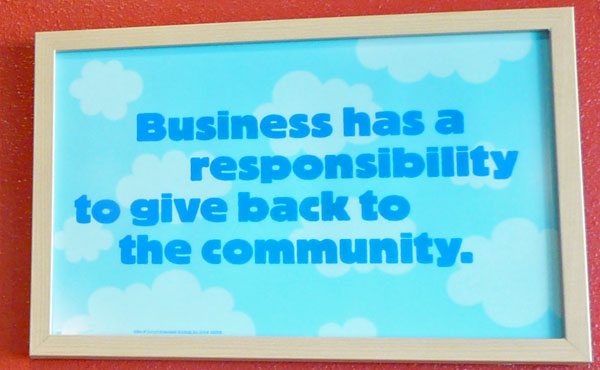
August 13, 2017; Forbes
Nonprofits that have bought into the notion of nonprofits as the poor stepsister to for-profits need to read between the lines sometimes to understand the degree to which we often have as natural assets the very things that others need to painstakingly attach to their structures. This article in Forbes on the use of providing access to volunteer opportunities as a millennial recruiting and retention tool is a case in point.
“People bring their whole selves to work,” says Rachel Hutchisson, vice president of corporate citizenship & philanthropy at Blackbaud, a leading technology company that provides solutions to the philanthropic community. She is responsible for expanding the corporate social responsibility (CSR) efforts of its 3,000 associates, which drives her to survey the changing landscape of CSR.
Hutchisson senses a shift away from focusing on companies, instead highlighting the unique values of the individual. “Companies following this trend are beginning to look beyond their corporate imperatives with the understanding that their employees’ purpose—and their community’s social good needs—play into CSR.”
Before we go on, perhaps we could acknowledge that much of what is attributed to millennials is stuff that has been beaten out of some of the rest of us. Research has now confirmed that millennials are a generous and socially conscious generation, and some companies have come to the conclusion that a good way to recruit and retain high-quality millennial employees is to engage them in charitable causes that are important to them personally. Traditionally, this has come in the form of paid time off for employees to volunteer, or a company match for donations made by employees.
Sign up for our free newsletters
Subscribe to NPQ's newsletters to have our top stories delivered directly to your inbox.
By signing up, you agree to our privacy policy and terms of use, and to receive messages from NPQ and our partners.
Some companies, however, have invested heavily in creating corporate social responsibility departments to lead the efforts in engaging employees in service. For instance, Mars, Inc., the candy company, created the Mars Volunteer Program, giving employees 16 hours of paid time off to take part in community service. Moreover, 90 employees are chosen each year to participate in an ambassador program that relates the goals of the company with their social responsibility goals.
There are several benefits for employers to invest in corporate social responsibility beyond the fact that millennials like employers who do. For instance, for employees who are not high on the corporate ladder quite yet, community service events allow them to network and “rub shoulders” with company leadership. Concurrently, working side-by-side at these events allows leadership to learn from employees and benefit from their feedback. Additionally, engaging in community service allows leadership and employees to gain a different perspective on their daily stresses that can help improve employee relations and productivity.
But, now for a statement of the obvious: Nonprofits have these opportunities in house! For purpose-driven workers like millennials—and many of the rest of us—well-designed nonprofit workplaces can create these same conditions and characteristics inside our work. The fact that some workplaces are still formed in the command and control model, with tasks and roles strictly cordoned off and little intentional mentoring, means we are wasting our natural resources. We are burying our human capital and then forgetting that we have it, and that is deplorably wasteful.
As we have mentioned previously, the steps to create a purpose-driven and engaged workplace are well documented—and if you don’t know them, make it your business to find out.—Sheela Nimishakavi and Ruth McCambridge













